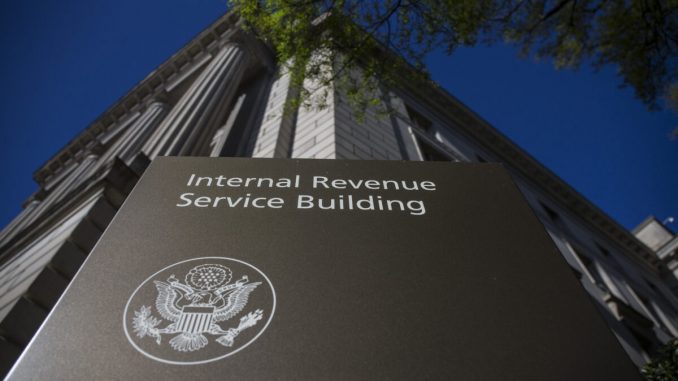
Around 70 percent of the benefit from repealing the federal cap on the state and local tax (SALT) deduction would go to households making $500,000 or more per year, while just one percent of the benefit would go to those earning $100,000 or less, according to a recent study from the Tax Policy Center.
Earlier in April, more than 30 bipartisan members of the House formed the SALT caucus to push for a repeal of the cap, with caucus members stating that the move would provide tax relief to “hard-working middle-class families.”
But the Tax Policy Center analysis shows that abolishing the cap would be a windfall for higher-income households, with those earning $1 million or more a year set to receive 49 percent of the benefit and nearly 93 percent of such households seeing an average tax cut of nearly $48,000.
Further, 97.6 percent of households earning between $50,000 and $75,000 would see no tax break whatsoever, while the remaining 2.4 percent in that income bracket would see an average tax cut of just $260.
The SALT tax deduction cap was set at $10,000 by President Donald Trump’s 2017 Tax Cuts and Jobs Act (TCJA) as a way to offset some of the government revenue lost to other provisions of the tax reform bill.

For high-tax states like Democrat-led California and New York, repealing the cap has been a key priority, with supporters of the repeal arguing that the cap constrains state and local government spending, much of which benefits lower-income residents.
In 2018, four states—New York, Connecticut, Maryland, and New Jersey—banded together to sue the Trump administration over the cap, alleging that it was unconstitutional, unfairly targeted New York and similarly situated states, and interfered in the rights of the states to make their own federal tax decisions. A judge dismissed the suit in 2019, ruling that the cap was not unconstitutionally coercive and that the states had not laid out a convincing case for how the measure meaningfully constrained their decision-making processes.
Some organizations, like the Brookings Institute, have called for the SALT tax deduction to be abolished entirely, stating in a policy note that repealing the cap would be “a massive tax cut for the rich,” while arguing that “there is a strong case for building on the progress made in the TCJA and eliminating the deduction altogether.”
Last year, Democrats proposed lifting the cap on the SALT deduction for 2020 and 2021 as part of a COVID-19 relief package, arguing it would provide relief to people hit hardest by the CCP (Chinese Communist Party) virus.
In the most recent push to repeal the cap, SALT caucus co-Chair Rep. Josh Gottheimer (D-N.J.) said in a statement that “it is high time that Congress reinstates the State and Local Tax deduction, so we can get more dollars back into the pockets of so many struggling families—especially as we recover from the pandemic.”
Another co-chair of the caucus, Rep. Young Kim (R-Calif.) stated that Californians have been burdened by high state and local taxes and that her district would pay on average more than $640 million in the 2022 tax year due to the SALT cap.
“I am proud to fight for lower taxes for my constituents as Co-Chair of the SALT caucus and am looking forward to working together to ensure California workers and families can keep more of their hard-earned money,” Kim said in a statement.
Critics have argued that lifting the SALT cap would force people in low-tax states such as Tennessee and Texas to subsidize high-tax states like California and New York.
Besides direct federal grants, which are the most significant form of fiscal support to state and local governments, a major indirect transfer is the deductibility of SALT taxes.
The SALT deduction cost the federal government just over $100 billion in 2017, according to the Economic Policy Institute, with the cap imposed by Trump’s tax reform bill that same year reducing this cost by around 80 percent in 2018.
Repealing the SALT deduction cap would cost the Treasury nearly $89 billion in lost revenue for 2021, according to the Joint Committee on Taxation, while a multiyear repeal would cost considerably more.





Be the first to comment